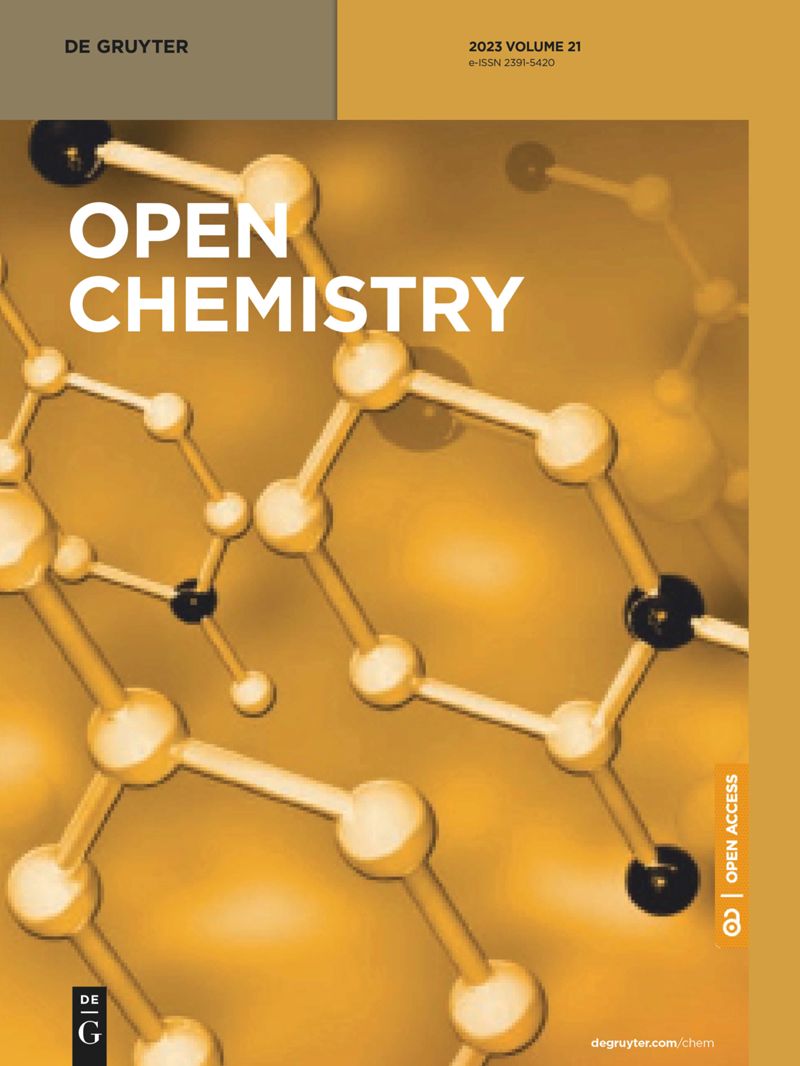Protective activities of silver nanoparticles containing Panax japonicus on apoptotic, inflammatory, and oxidative alterations in isoproterenol-induced cardiotoxicity
IF 1.9
4区 化学
Q3 CHEMISTRY, MULTIDISCIPLINARY
引用次数: 0
Abstract
含三七的银纳米颗粒对异丙肾上腺素诱导的心脏毒性中细胞凋亡、炎症和氧化改变的保护作用
在中国传统医学中,三七一直被用作治疗各种疾病的草药。在这项研究中,我们利用三七的水提取物合成了环境友好型银纳米粒子(AgNP),并对其心脏保护作用进行了研究。通过各种分析方法,我们确定了纳米粒子(NPs)。我们的 XRD 发现了 Ag@P. japonicus 的形成,而 FE-SEM 图像则表明 NPs 呈球形,尺寸小于 40 nm。紫外可见光谱和傅立叶变换红外光谱证实了 Ag@P. japonicus 的绿色合成。药用部分使用了 45 只 Wistar 大鼠。这些组包括一个正常组、一个仅使用异丙肾上腺素诱发心肌梗死的组,以及两个使用不同剂量 AgNPs 预处理 14 天的组。这些预处理组随后再接受异丙托肾上腺素治疗。对 PI3K/Akt/mTOR 及其他下游炎症和凋亡介质的表达进行了跟踪。此外,还评估了 Keap1、Nrf2、心电图、心脏标志物和其他下游抗氧化酶的表达。AgNPs治疗可改善心肌细胞凋亡、炎症和心肌自噬,调节PI3K/Akt/mTOR通路,提高抗氧化酶的功效,并激活Keap1/Nrf2/HO-1通路。研究结果表明,AgNPs 可通过缓解 Keap1/Nrf2 通路、GST、GPx、GSH、SOD、IL-1β、IL-6、TNF-α、NF-κB、Bax、Bcl2、caspase-9、caspase-3 和 PI3K/Akt/mTOR 通路,对心肌梗死具有心脏保护作用。此外,治疗还能缩小梗死区面积,降低心脏指标水平,减轻免疫细胞浸润和心肌坏死。
本文章由计算机程序翻译,如有差异,请以英文原文为准。
求助全文
约1分钟内获得全文
求助全文
来源期刊

Open Chemistry
CHEMISTRY, MULTIDISCIPLINARY-
CiteScore
3.80
自引率
4.30%
发文量
90
审稿时长
6 weeks
期刊介绍:
Open Chemistry is a peer-reviewed, open access journal that publishes original research, reviews and short communications in the fields of chemistry in an ongoing way. The central goal is to provide a hub for researchers working across all subjects to present their discoveries, and to be a forum for the discussion of the important issues in the field. The journal is the premier source for cutting edge research in fundamental chemistry and it provides high quality peer review services for its authors across the world. Moreover, it allows for libraries everywhere to avoid subscribing to multiple local publications, and to receive instead all the necessary chemistry research from a single source available to the entire scientific community.
 求助内容:
求助内容: 应助结果提醒方式:
应助结果提醒方式:


